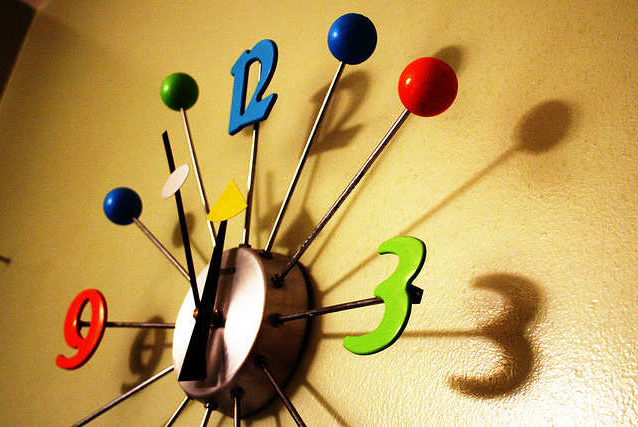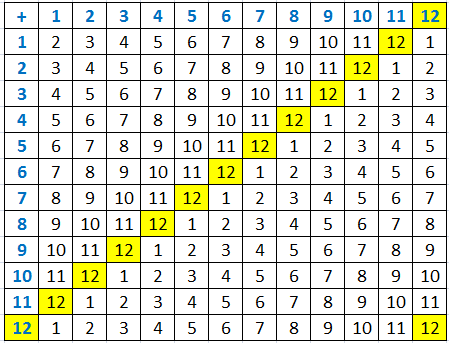Introduction to Clock Arithmetic and Modular Systems
Most of us are familiar with 12-hour analog clocks. They are numbered 1 through 12; they have hour, minute, and second hands. In this post, we are going to experiment clock arithmetic — we are going to perform addition using the numbers on the clock.
Let us think about the following questions.
- What if we add 3 hours after 8:00?
- What if we add 2 hours after 3:00?
- What if we add 4 hours after 11:00?
The first two questions are easy to answer. Adding 3 hours to 8 gives us 11, while adding 2 hours to 3 gives us 5. The problem lies in adding numbers whose sum is greater than 12. In the third question, 4 added to 11 is equal to 15, but there is no such number in a 12-hour clock. The answer, as we all know, is 3 which is equal to 15 minus 12. As we can see, the number seems to “wrap around” after 12.
To give us a better picture of our experiment, let us examine the addition table of our “clock number system.” First, we can observe that 12 behaves like 0 because any number added to 12 is equal to that number. Second, we can also observe that if the sum of two numbers is greater than 12, we just have to subtract 12 to determine the time. For example, 11 + 11 = 22, but 22 – 12 = 10, so 11 + 11 = 10. This is shown in the table below.
Another difficulty is adding large numbers that are not in the table. What if we add 32 to 45. The answer is 68, but there is no equivalent in the table. Of course, we just have to subtract 12 until the the remaining number is less than 12. Doing this, we have 68 – 12 = 56, 56-12 = 44, 44 – 12 = 32, 32-12 = 20, and 20 – 12 = 8. You probably realized that this is equivalent to 68 – 12(5), or wrapping 68 around 12 five times.
However, repeated subtraction is similar to division. This means that the process above is equivalent to dividing 68 by 12 and getting the remainder. Sixty eight divided by 12 is equal to 5 and the remainder is 8.
Using the method above, it follows that 8 has many “equivalent” numbers. The numbers 8 + 12 = 20, 8 + 2(12) = 32, and 8 + 3(12) = 44 are all equivalent to 8 . In fact, all numbers of the form 8 + 12k, where k is a positive integer are all equivalent to 8. This makes sense because as we have mentioned above, 12 behaves like 0.
The kind of number system is called the modular arithmetic or sometimes called clock arithmetic. Modular arithmetic is a number system where numbers “wrap around” after they reach a certain value — its modulus. In the clock number system above, the modulus is equal to 12. Continue reading…

